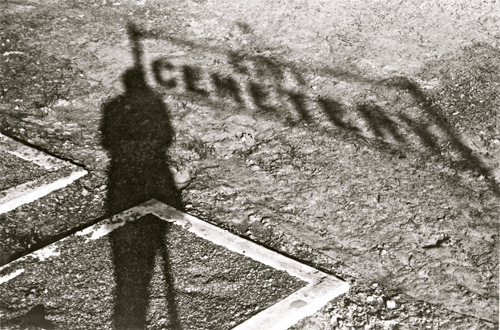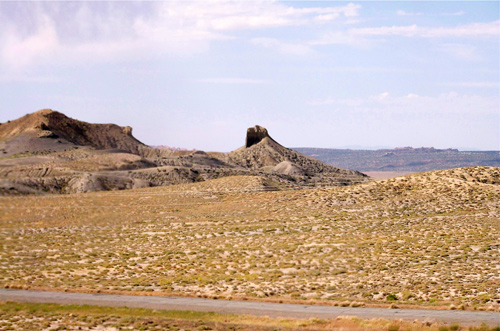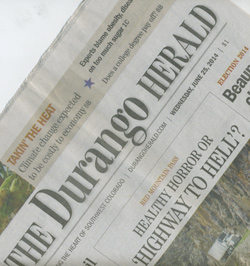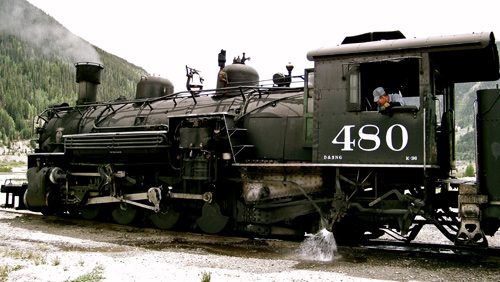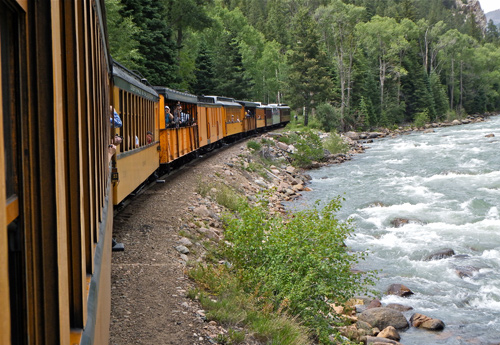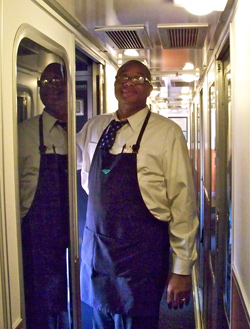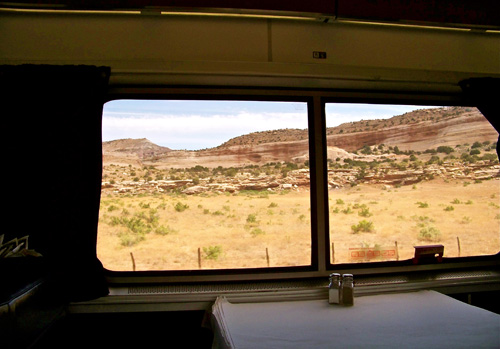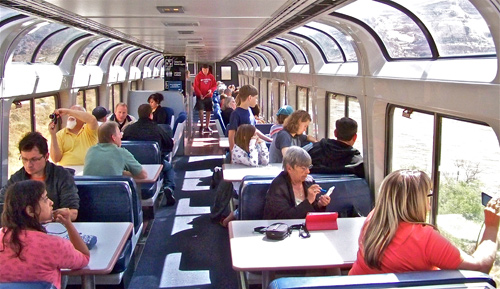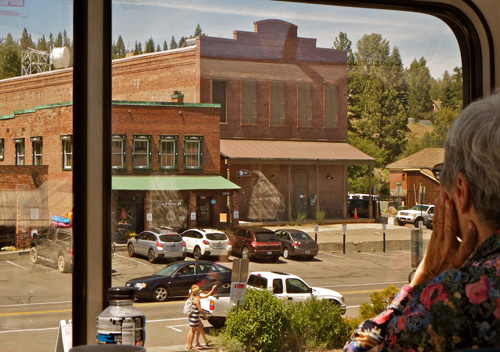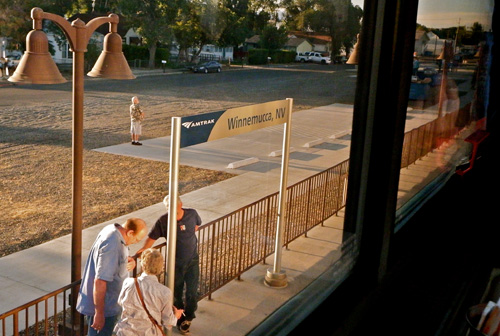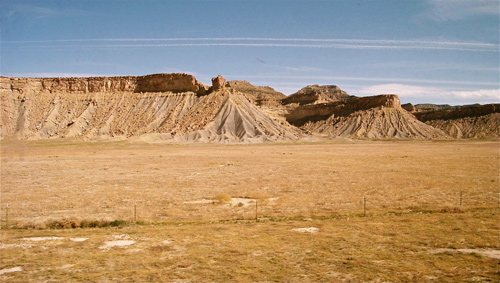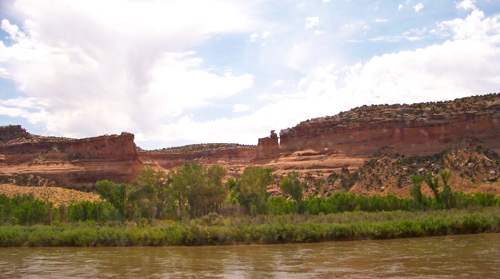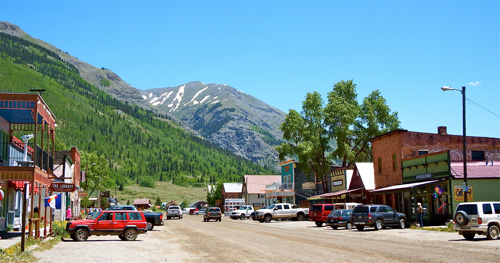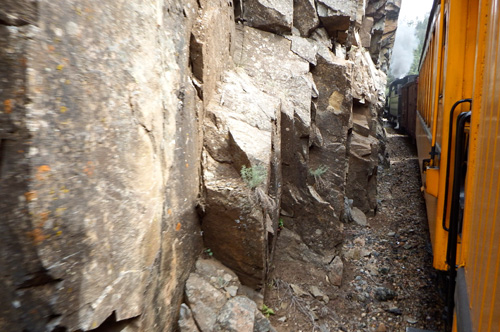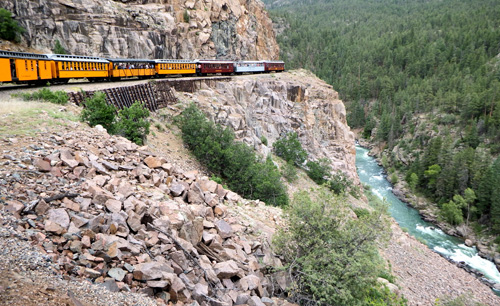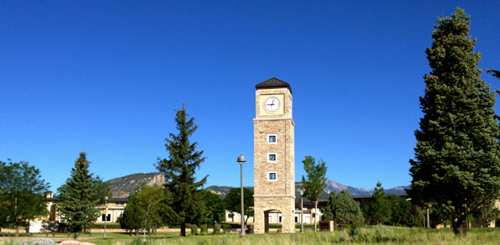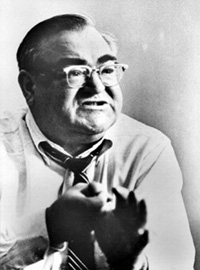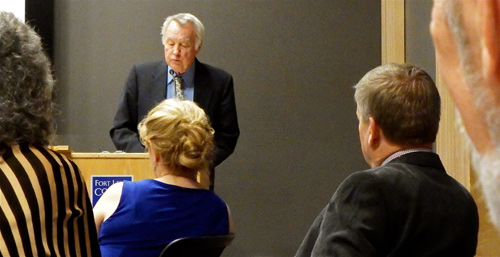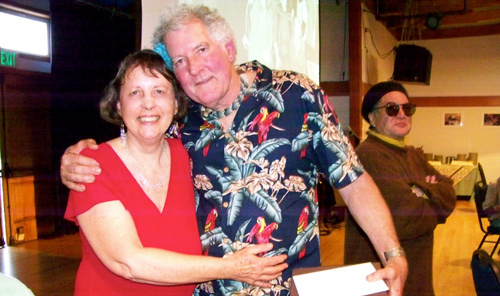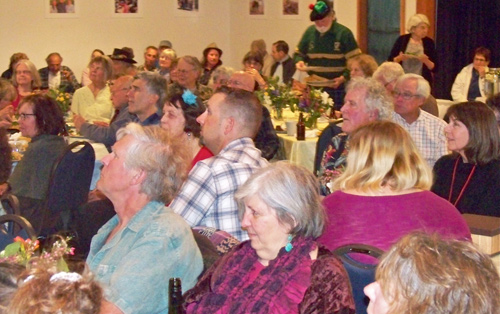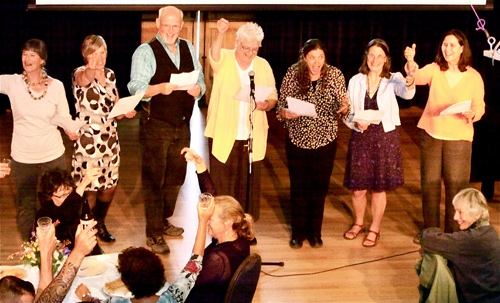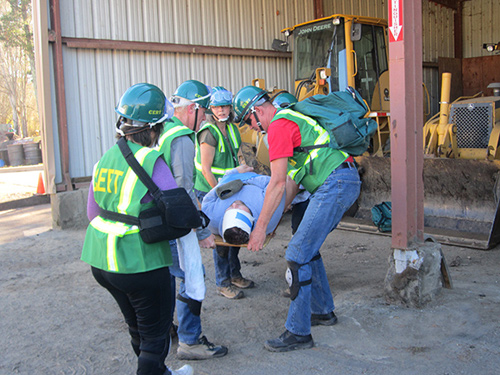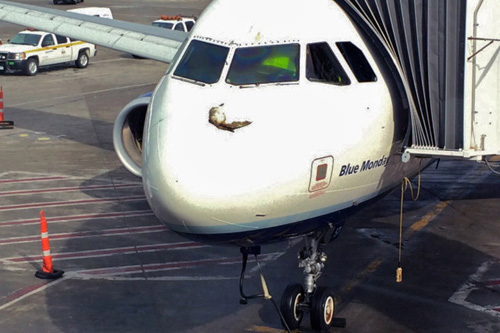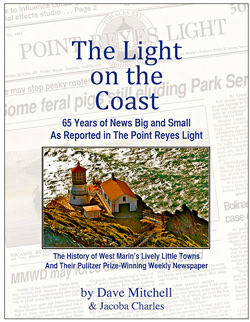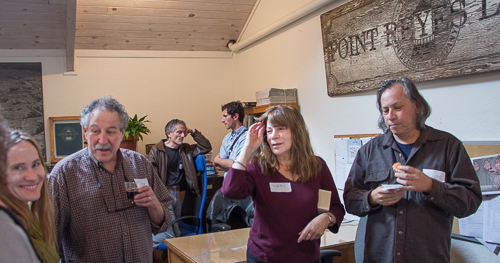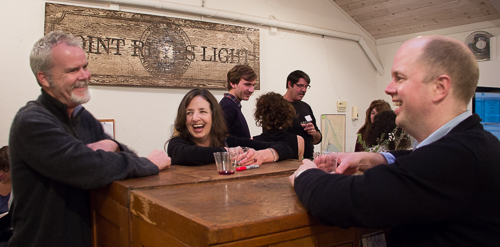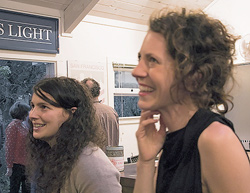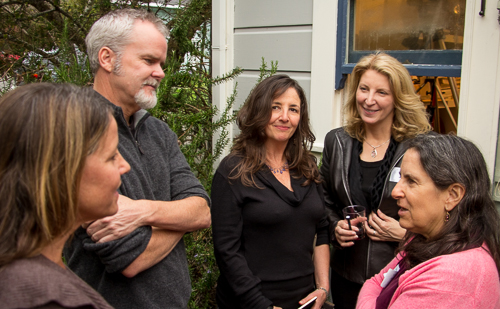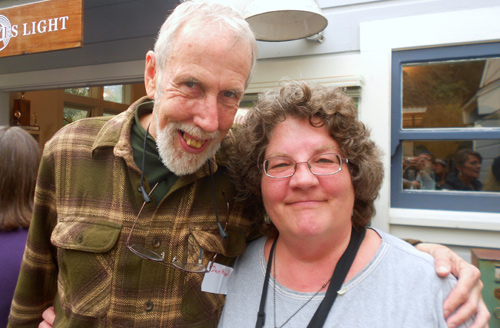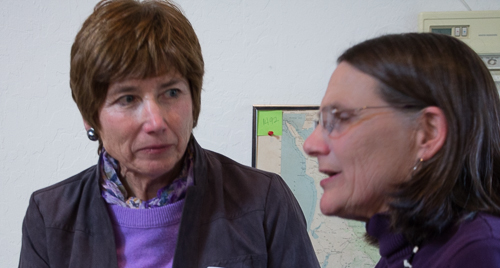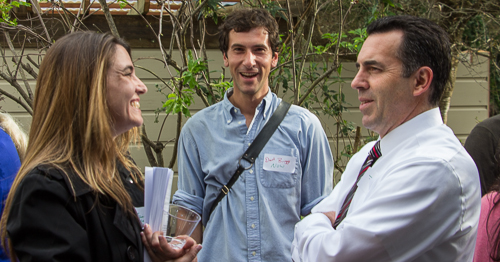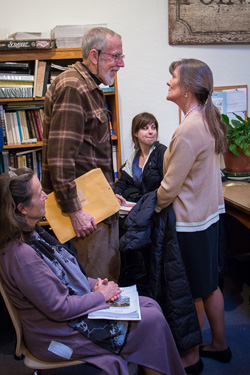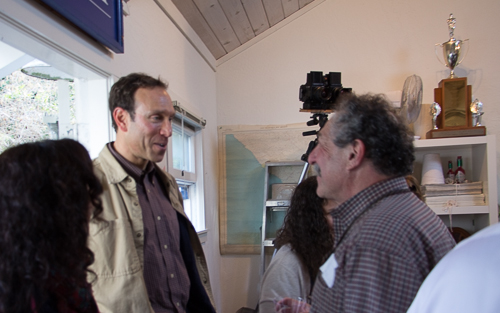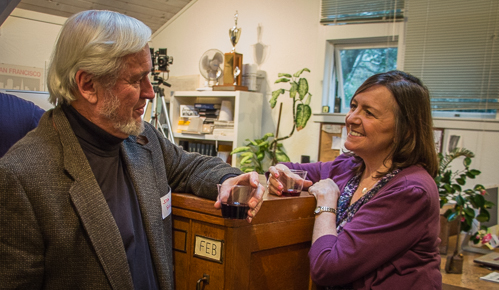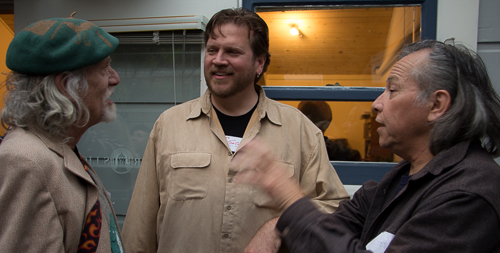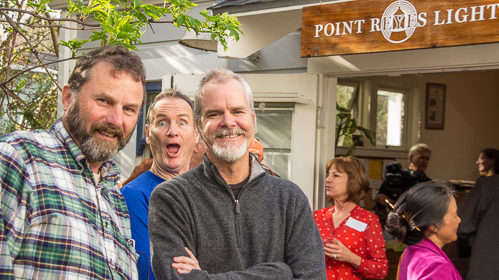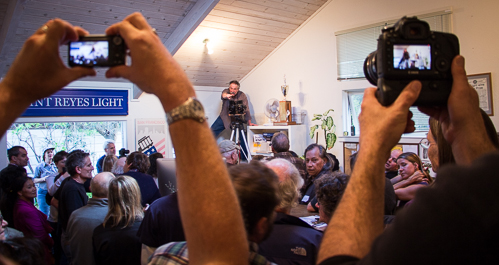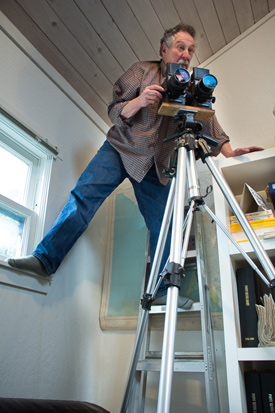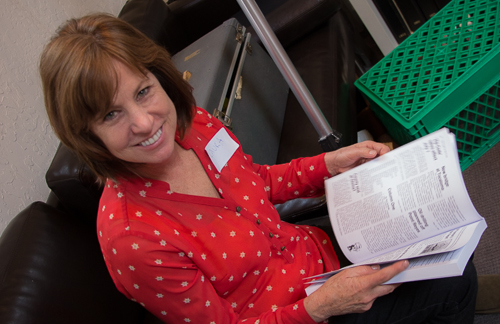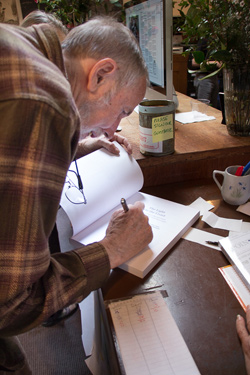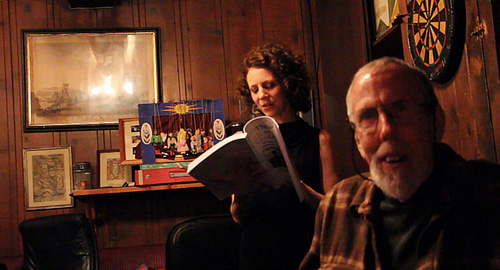With airlines becoming increasingly unpleasant, airport security treating passengers as suspected terrorists, flight attendants abusing fliers, and seats too close together to sit comfortably, there are better ways to travel.
Three weeks ago when Lynn and I traveled to Durango, Colorado, we saw no need to let an airline ruin an otherwise happy trip, so we didn’t. It was a good decision.

On the first part of our journey, we rode Amtrak from Emeryville to Grand Junction, Colorado.

Our roomette gave us space to stretch our legs and to sleep lying down. Unlike airlines that travel at roughly 30,000 feet, trains travel at ground level, and the scenery we passed through, such as this stretch of Utah desert, was spectacular.
_________________________________________________________________
 From Grand Junction, we drove almost 150 miles to Durango.
From Grand Junction, we drove almost 150 miles to Durango.
South of Ouray, Colorado, Highway 550 crosses Red Mountain Pass, and last year USA Today described that section of highway as one of the “world’s 12 most dangerous roads.”
As The Durango Herald reported while we were in town, it shares that distinction with the “Highway of Death in Iraq” and “Death Road” in Bolivia.
_________________________________________________________________

“Red Mountain Pass, per mile, has the highest avalanche hazard on the North American Continent,” The Durango Herald added. “The narrow, two-lane road winds through the mountains like a drunk crazily stumbling, and there’s no guardrail to protect cars attempting hairpin turns from hurtling into the jagged ravines that lie, stunning and ominous, hundreds of feet below.”

While Amtrak locomotives, of course, burn diesel fuel, steam locomotives still burn coal. The International Society of Weekly Newspaper Editors (ISWNE), whose conference Lynn and I were attending, took an excursion on the 132-year-old Durango and Silverton Narrow Gauge Railroad from Silverton to Durango. I had as much fun as a kid with a Lionel Train set.
While trains in general are rich in history, steam engines are especially rich in nostalgia, even for the trainmen. Our engineer, Mike Nichols (seen releasing extra water for making steam), has been on the run for 43 years.

The route of the Durango and Silverton Railroad provided spectacular scenery of its own. Some passenger cars on the train have traditional, enclosed seating while some are open-air for enhanced sightseeing.

You may recall Arlo Guthrie’s hit, The City of New Orleans, in which: “The conductor sings his song again: the passengers will please refrain….” The line may be an allusion to a ribald ditty that folk legend Oscar Brand popularized with a 1956 recording. Sung to the tune of Dvorak’s Humoresque, it begins: “Passengers will please refrain/ from flushing toilets while the train/ is in the station, Darling I love you….”
Toilets on trains traditionally dumped their sewage on the tracks, which was unpleasant for track workers and for anyone below a bridge the train was crossing. At the insistence of Congress, Amtrak between 1991 and 1996 installed holding tanks for sewage in all cars with restrooms. Likewise, the Durango and Silverton Railroad’s toilets no longer empty onto the tracks although its restroom sinks still do. ___________________________________________________________________
 Like all the Amtrak crew members we encountered, Nathan, the attendant for our two-level passenger car, was friendly as well as efficient.
Like all the Amtrak crew members we encountered, Nathan, the attendant for our two-level passenger car, was friendly as well as efficient.
Not only did he maintain the car throughout its trip from Emeryville to its ultimate destination, Chicago, he converted our roomette seats to beds at night and back to seats in the morning.
He also provided passengers in his car with free coffee, juice, and snacks.
__________________________________________________________________

A view of Utah from a window in the dining car.
Passengers in sleeper cars pay nothing extra for their meals, and Amtrak does not skimp on its fare. Steak and seafood were among the dinner entrées.
Travelers typically are seated with other travelers at tables in the dining car, and all the strangers Lynn and I ate with turned out to be pleasant, friendly folks. Train travelers, we soon realized, more easily socialize with each other than air travelers do.

Amtrak’s lounge car was great for sightseeing, snacking, and socializing. Some passengers brought their computers there to work in pleasant surroundings.

Riding Amtrak provides a tour of numerous towns that remain part of the Old West. This is Truckee near Donner Pass over the Sierra Nevada.

Winnemuccca, Nevada.
Amtrak does not own the tracks it travels on, and our train rode on Union Pacific rails the entire way. Union Pacific freight trains have priority, and Amtrak trains have to sit on a siding or stay in a station whenever a freight comes along. As a result, Amtrak is almost never on schedule.
We spent an unscheduled 90 minutes in Winnemucca while waiting for the Union Pacific’s relief engineer and conductor to show up. The delay was no problem for Lynn and me. It just brought to mind the old Hank Snow song I’ve Been Everywhere, which begins with a trip to Winnemucca.

Airplane contrails high in the sky over the Utah desert. Eighty million years ago, the USGS website says, most of this area was covered by a warm, shallow, inland sea.

Seen from our Amtrak window, the Colorado River flows past Utah’s dramatic rock formations.

Ouray, Colorado
After enjoying a family get-together with my cousin Leck Mitchell and his wife Pat in Grand Junction, we embarked the next day on a mostly relaxed drive to Durango. Along the way, we stopped for lunch in the old mining town of Ouray. The city of only 1,000 residents is full of historic buildings and offers a variety of places to eat. __________________________________________________________________
 South of Ouray, however, our drive over Red Mountain Pass became a challenge.
South of Ouray, however, our drive over Red Mountain Pass became a challenge.
“Although the speed limit is 15 mph for much of Red Mountain Pass,” The Durango Herald noted, “more than 300 accidents took place there between 1995 and 2010.
“The majority occurred in dry conditions and involved only one vehicle. Eight accidents killed nine people, including five highway workers.”
The newspaper quoted Nancy Shanks, the local Colorado Department of Transportation spokeswoman, as saying, “It’s so scary it forces people to focus and slow down.”
Another reason there aren’t even more wrecks, a shopkeeper in Silverton theorized, is that there’s no cellphone reception going over the pass, so drivers don’t get distracted by texting as they skirt the precipices. ___________________________________________________________________

With no guardrails and, in many places, no shoulder between the asphalt and the edge of a cliff, the pass must be impassable for drivers bothered by vertigo.
Heidi Pankow, public relations manager for the Ouray Chamber Resort Association, told The Herald, “People stop in and ask, ‘Why are there no guardrails?’ We explain there’s no room because plows have to push the snow off the edge in winter. It’s definitely a topic that comes up a lot.”
The road is also known as the Million Dollar highway. However, “the origin of the ‘Million Dollar’ name is clouded in myth,” Road Trip USA has noted. “Some say it was first used after an early traveler, complaining of the vertigo-inducing steepness of the route, said, ‘I wouldn’t go that way again if you paid me a million dollars.’
“Others claim that it derives simply from the actual cost of paving the route in the 1930s. But the favorite explanation is also the most likely: when the highway was first constructed, the builders used gravel discarded by nearby gold and silver mines, only to find out later that this dirt was actually rich in ore and worth an estimated ‘million dollars.’

Lynn prepares to board the Durango and Silverton Narrow Gauge Railroad in Silverton during the ISWNE excursion.

Silverton was born as a silver- and gold-mining town in 1874, and at one time Blair Street (pictured) was lined with 40 saloons and brothels that served the miners. Most of the old buildings are still standing, and the downtown area is now a National Historic Landmark District. With an elevation of 9,308 feet, the town has a summer population of around 600 but far less in winter.
The town’s 139-year-old newspaper, The Silverton Standard, is now a nonprofit owned by the San Juan Historical Society, which took it over five years ago when The Standard was about to go out of business. The paper is now marginally in the black, its editor, Mark Esper, told ISWNE members when we met with him in the old county courthouse.
In keeping with Silverton’s rakish past, the town council is now considering modifying its zoning to allow a retail marijuana shop just east of downtown, The Standard reported while we were in town. Current zoning would already allow a marijuana-growing facility in the area, the paper noted.

ISWNE members gaze at the scenery as the narrow-gauge railroad crosses the San Juan Mountains en route to Durango.

Train conductors warn passengers not to stick their heads or arms out the window during the ride. The train passes so close to rocks and trees a passenger could easily bang into them.

Like the “Highway to Hell,” the train route in places winds along the edge of cliffs. The precipices, however, seem far less daunting when riding on a train than when driving above them in a car.
Air travel too, of course, includes a lot of looking down from high places, and that makes some people even more queasy. All in all, Lynn and I found traveling by train and car far preferable to flying, and the scenery was immensely better.
As last week’s posting noted, our destination was an annual conference of the International Society of Weekly Newspaper Editors, which this year was in Durango. I was there to give a talk and receive ISWNE’s Eugene Cervi Award, and these were the highlights of our trip. But getting there, around, and back was great fun too.



